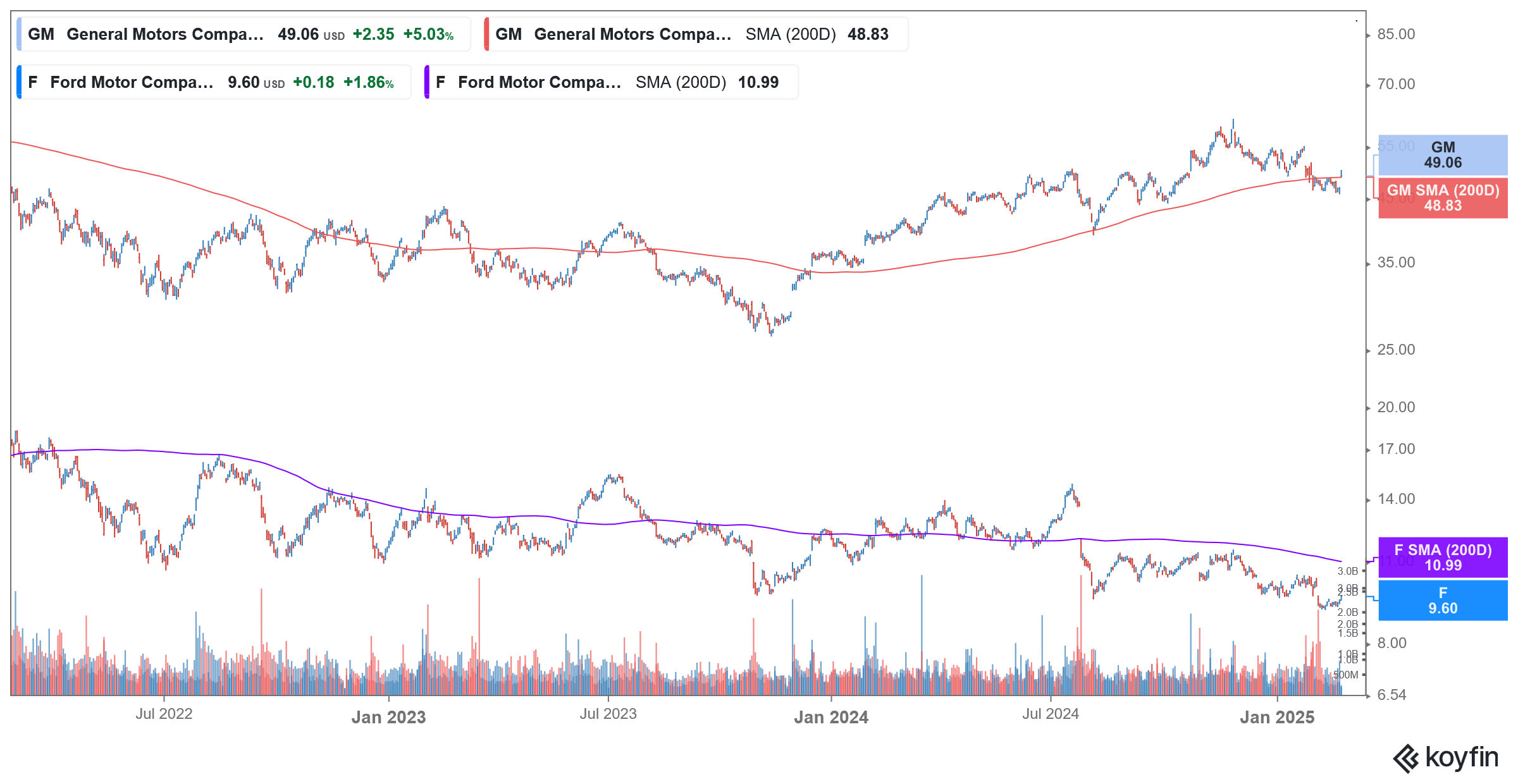GM Stock Rises on New Buyback Plan and Dividend Hike
Please note that we are not authorised to provide any investment advice. The content on this page is for information purposes only.
General Motors (NYSE: GM) stock is trading sharply higher in early US price action today after the Detroit auto giant announced a $6 billion share buyback program and also hiked its dividend.
Of the $6 billion buyback authorization, $2 billion would be under the accelerated share repurchase (ASR) program which the company expects to execute in the second quarter.
GM Stock Rises on New Share Buyback Plan and Dividend Hike
In her prepared remarks, GM CEO Mary Barra said, “The GM team’s execution continues to be strong across all three pillars of our capital allocation strategy, which are to reinvest in the business for profitable growth, maintain a strong investment grade balance sheet, and return capital to our shareholders.”
She added, “We are growing our business thanks to our broad, deep, and compelling portfolio of ICE vehicles and EVs. At the same time, we are investing our capital in a disciplined and consistent way to continue generating strong margins and cash flows.”
Notably, this is the third mega share buyback authorization from GM in less than two years. It announced a $10 billion accelerated share buyback plan in November 2023 and authorized yet another $6 billion repurchase plan in June 2024.
Thanks to these massive buybacks, GM managed to lower its outstanding share count to below 1 billion in the final quarter of 2024 which was ahead of its schedule.
GM Is Posting Healthy Cash Flows
GM posted adjusted automotive free cash flows of over $14 billion last year which was 20.4% higher YoY. It expects to post adjusted pre-tax earnings between $13.7 billion-$15.7 billion in 2025 as compared to $14.9 billion last year. The company expects its automotive free cash flows to be between $11 billion-$13 billion in 2025 which is lower than the last year.
Here it is worth noting that the guidance does not assume any impact from the tariffs that President Donald Trump might impose on Canada and Mexico both of which are major sourcing destinations for GM as well as rival Ford.
Ford Has Been Frugal with Buybacks
GM also hiked its dividend and would now pay a quarterly dividend of 15 cents which is what Ford currently pays. That said, given Ford’s low stock price it has a dividend yield in excess of 6% while even with the higher dividend GM’s dividend yield would be just about 1.2% which is slightly below the S&P 500’s yield.
Notably, while both Ford and GM are posting healthy cash flows, the former is spending the money on dividends rather than buybacks. Ford is committed to returning between 40%-50% of its free cash flows to shareholders, and along with the usual quarterly dividend it announced a special dividend of 15 cents per share during its Q4 earnings call earlier this year which was preceded by a special dividend of 18 cents last year.
The company announced a supplemental dividend in 2023 also after it sold its stake in EV startup Rivian. Ford was the second biggest shareholder of Rivian after Amazon but has since sold most of its stake.
Ford Stock Has Sagged
F stock underperformed GM by a wide margin last year and the divergence is well explained by their financial performance. GM raised its 2024 guidance in the previous three earnings calls even as several other global automakers cut their forecasts amid a tough macro environment – particularly in China.
For 2025, Ford forecast adjusted EBIT between $7 billion to $8.5 billion and adjusted free cash flow of $3.5 billion to $4.5 billion. Both these metrics signal significant deterioration from the last year. The guidance “presumes headwinds related to market factors” and a 2% fall in vehicle prices. GM on the other hand provided upbeat guidance even though its Q4 earnings and 2025 guidance failed to cut ice with markets and the stock closed lower despite the company posting a stellar set of numbers.
GM Has Been Prudent with Capital Allocation
General Motors has been quite prudent with capital allocation and has additionally been looking to cut down on its losing bets. In December, GM announced that it would exit the Cruise robotaxi business and would instead focus on autonomous driving for personal vehicles. GM’s robotaxi business was burning a lot of cash while the competition in the industry is set to intensify with Tesla launching its Cybercab. The move would help the company save over $1 billion annually.
GM’s EV market share in the US doubled last year and the business generated a variable profit in Q4 as the company had forecast. Both Ford and GM are currently posting losses in the EV business and are working to cut down on these losses. While General Motors’ EV business posted a variable profit in Q4 and the company expects the segment’s losses to narrow by between $2 billion-$4 billion this year, Ford expects its EV pre-tax losses to be between $5 billion-$5.5 billion this year which is not much different from the $5.08 billion loss last year.
Cost cuts and prudent capital allocation have helped GM increase shareholder payouts through both higher dividends and generous buybacks. As GM CFO Paul Jacobson said in his prepared remarks, “We feel confident in our business plan, our balance sheet remains strong, and we will be agile if we need to respond to changes in public policy.”
He added, “The repurchase authorization our board approved continues a commitment to our capital allocation policy.”
Tariffs Could Complicate the Macro Environment
Meanwhile, if Trump goes ahead with the tariffs on Canada and Mexico, it would worsen the macro environment for US automakers. In its report earlier this year, S&P Global noted, “There are approximately 5.3m light vehicles built in Canada and Mexico, with about 70% of these destined for the US. Further, many US-built vehicles use Canadian or Mexican-sourced propulsion systems and component sets; those components would see a tariff as well, increasing costs for vehicles produced in the US.”
The report adds that 22% of vehicles sold in the US last year were imported from either Canada or Mexico. Specifically, GM sourced 22% of its vehicles from Mexico last year while the corresponding number was 15% for Ford.
For now, though, markets are shrugging the tariff risk and both Ford and GM stocks are trading higher today.






